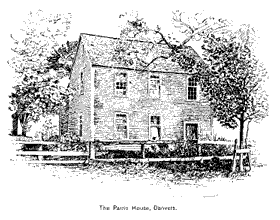Salem Village Divided
By the fall of 1691, only two years after his ordination, Parris's ritual orthodoxy, overbearing disposition, and disputed contract had created another crisis for Salem Village's church. Attendance was down and village officials refused to provide firewood to warm the church or Parris's house. Most ominous for Parris and his supporters was the success of his opponents in capturing the Committee of Five that oversaw matters relating to the church. A new committee, chosen by the village in October 1691, announced its refusal to relinquish the ministry house and land to Parris or to collect taxes for his salary, leaving it to the villagers to pay by "voluntary contributions." For his part, Parris called upon church members to make a formal complaint to the County Court against the committee's neglect of the church.
Salem Village's factionalism constituted the backdrop for the events of 1692. Just months before the initial flare-up of afflicted behavior, Salem Village was in turmoil over its minister. The factional fault-lines that had marked the controversy over Deodat Lawson reemerged over Samuel Parris. It therefore seems unsurprising that the afflictions, which were eventually determined to involve witchcraft, began in Parris's own home, the focal point of village strain. We will never know how the village's controversies over firewood, ownership of the ministry house, taxes, church doctrine, and Parris's ministry itself would have been resolved; all were subsumed within the maelstrom of the witchcraft outbreak.
§ § §
To proceed to Part Two, which examines the chronological and geographic dimensions of 1692, click "Next".
To proceed to Part Three, which explores Salem Village factionalism and its relationship to witchcraft, choose "Salem Village" from the navigation menu.
